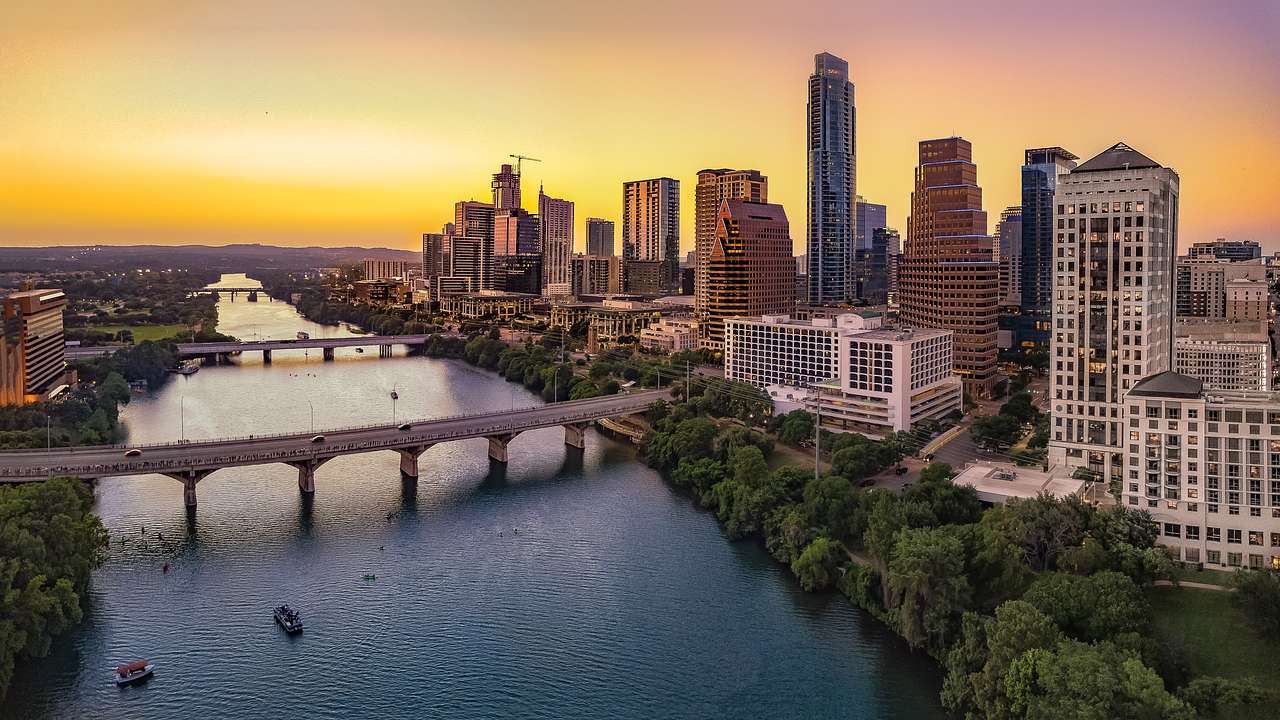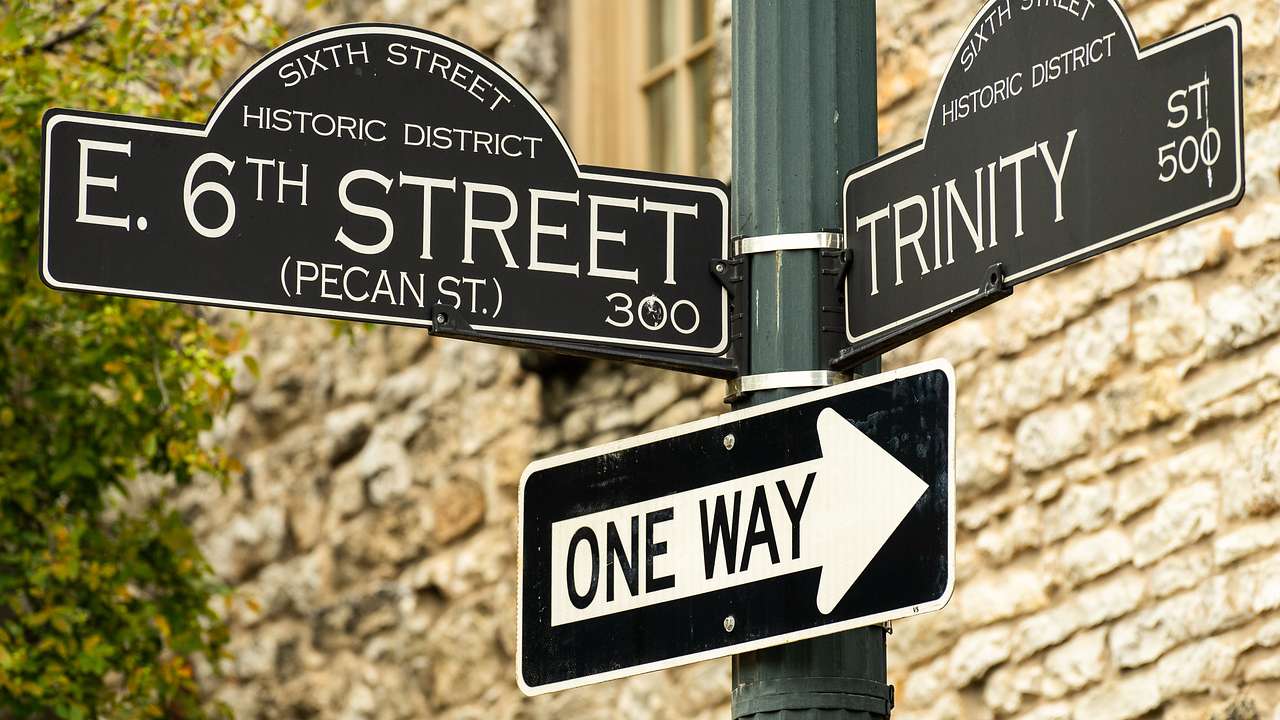Best Time to Visit Austin, Texas, for Weather, Prices, and Crowds
Destguides may receive commissions from purchases made through affiliate links in this article.
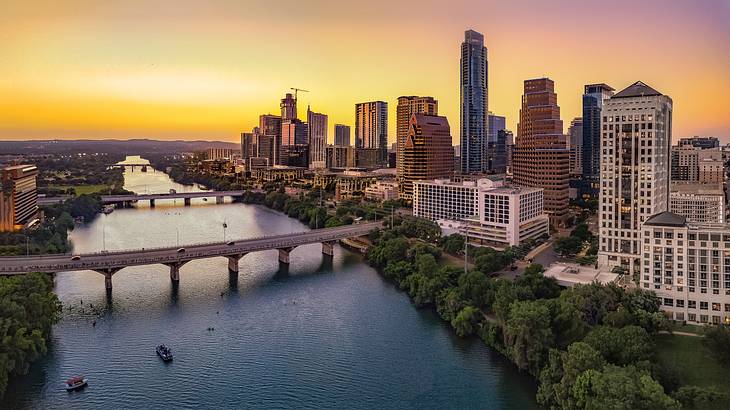
Austin is a city full of culture, art, and vibrance, so it's no wonder it's become a popular destination for travelers. However, you might have a different experience depending on when you visit.
The best time to visit Austin, Texas can vary based on your travel preferences. Traveling between November and February will be ideal if you want to encounter lower crowds. Winter (December-March) is also one of the cheapest times to visit the city.
If your biggest concern is the weather, summer (June-September) is the area's driest season, but it's also the hottest. Fall (September-December) tends to have more comfortable temperatures that hover in the 70-90 degree Fahrenheit range.
Austin has a lot to offer all year, so why not make sure you have the best time possible? Keep reading to learn all the tips you need to know to have the Austin trip of your dreams!
Heading to Austin and planning last-minute?
To make the most of your visit to Austin, we recommend you book accommodations and experiences soon. Below are some top recommendations to get you started.
🏨 Top accommodations in Austin
- Sentral East Austin at 1614 E Sixth (rated highly)
- The Westin Austin at The Domain (relax by the pool)
- The Otis Hotel Austin (4-star rating)
☂️ Top tours and experiences in Austin
- The Brunch Bus - Food Tour With a Live Band on Board the Bus (rated highly)
- Hill Country BBQ & Wine Shuttle (very popular)
- Best of Austin Small-Group Driving Tour With Local Guide (very popular)
- Austin Downtown Walking Food Tour With Secret Food Tours
- Double Decker Austin Single Loop Sightseeing Tour
Best Time to Go to Austin, TX
-
Austin, Texas Vacation Planning Questions
- When is the best time to visit Austin, Texas?
- When is the cheapest time to visit Austin, Texas?
- When is the cheapest time to fly to Austin, Texas?
- When is the rainy season in Austin?
- What is the typical weather in Austin, Texas?
- When is the best time to visit Austin, Texas, for music?
- When is the best time to visit Austin, Texas, for the weather?
- When is the best time to visit Austin, Texas, for the bats?
- When is the best time to visit Austin and San Antonio together?
- Weather, Prices, and Crowds in Austin, Texas
Austin Best Time to Visit Tips Video
Check out our highlights video of Austin best time to visit tips.
Austin, Texas Vacation Planning Questions
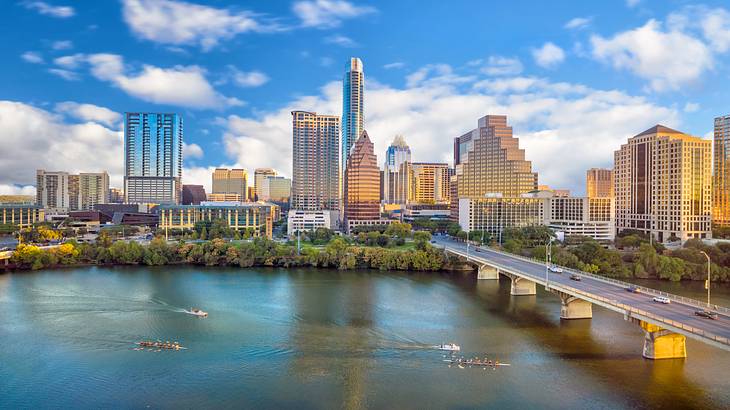

When is the best time to visit Austin, Texas?
If you're wondering when to visit Austin, TX, you should consider planning a trip for the fall (September-December). This season offers the best weather for visitors since temperatures are usually around 60-85 degrees Fahrenheit. You might encounter some rain, but there are usually only three-five rainy days per month.
Since the fall has such nice weather, crowds can intensify. While most families choose to travel during the summer (June-September) when school is out, many other travelers will postpone their vacation until the fall months.
You might find some deals on flights, but many hotels know there's a high demand for accommodation, so you might need a more flexible budget.
If you want to avoid crowds, you can book a tour and experience what the city offers without navigating large groups of people or waiting in long lines. Going on a food tour is an excellent way to taste the local cuisine during peak season.
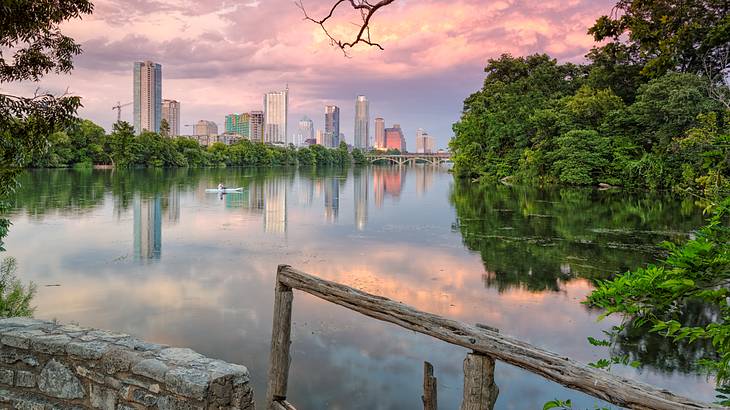
When is the cheapest time to visit Austin, Texas?
January is the best month to visit Austin, Texas, if you want to save some money. From November until February, prices tend to dip, and you'll find better deals on flights and hotels.
However, Thanksgiving and the Christmas holidays bring more travelers to the city. After New Year's Day, Austin has fewer tourists, resulting in lower prices.
Temperatures in January range between 41 and 61 degrees Fahrenheit, though colder snaps that see temperatures in the 30s are possible on occasion. You won't have to worry about snow, but there are typically five days of precipitation, so check forecasts before packing.
If you'd prefer warmer weather when you travel, June is also considered an Austin "shoulder season." Families usually don't travel to the city until later in the summer (June-September), and the hot 92-degree Fahrenheit climate deters many travelers.

When is the cheapest time to fly to Austin, Texas?
If you're on the hunt for cheap tickets to Austin, Texas, consider searching for flights that depart in January. It's one of the least popular months for tourism, so you can find good deals from airlines that fly into Austin (AUS) Airport, the nearest airport to Austin, Texas.
Since Austin Airport is under seven miles away from the city, you have many transport options which won't be too expensive. This airport is also well-connected to the rest of the country and is serviced by multiple major airlines.
January is the cheapest month to fly to Austin because the fewest tourists come to the city. The lower demand for tickets means you're likely to find last-minute deals if you like to plan more spontaneous trips.
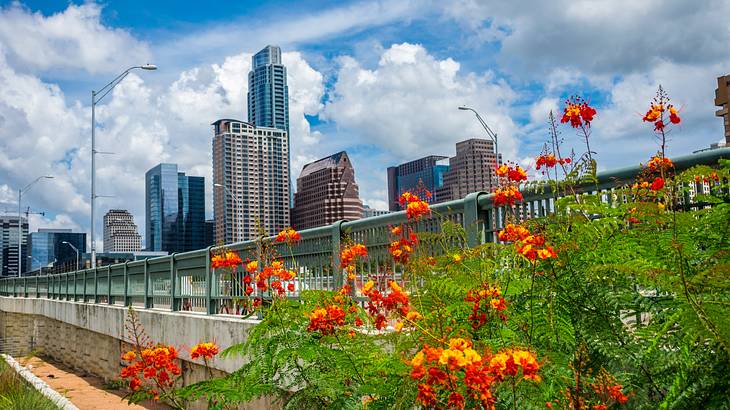
When is the rainy season in Austin?
Spring (March-June) tends to be Austin's rainiest season, with an average of five rainy days. May, in particular, tends to be the wettest month of the year, with up to six days of precipitation and a collective five inches of rainfall. However, rain is possible all year in Austin.
Strong storms are unlikely, and heavy rainfall is pretty rare. You can still walk around the city and enjoy the sights as temperatures in the spring range between 51 and 92 degrees Fahrenheit.
Bring an umbrella if the forecast predicts rain, but if you'd prefer to stay dry, Austin has numerous indoor activities you can enjoy. Most of these activities are open all year, and many don't require reservations.

What is the typical weather in Austin, Texas?
No matter when you visit Texas, the climate doesn't change too much. Most days are partly cloudy, and there is to differentiate between seasons.
Daily temperatures range between 61 and 96 degrees Fahrenheit, with the mid-70s being the average. At night, it gets cooler, usually between 41 and 71 degrees Fahrenheit, depending on the season.
It rarely snows in Austin, so the only adverse weather you might have to prepare for is rain. There are around 35-40 rainy days per year, with an average of five rainy days per month.
The only outliers to the area's general weather are the summer (June-September) months which see temperatures in the upper-90s Fahrenheit. May is also a rainier-than-average month.
Since the weather is pretty steady, you can plan a couple's trip virtually any time, even mid-winter (December-March). Luckily, Austin has a lot of date activities available all year long.
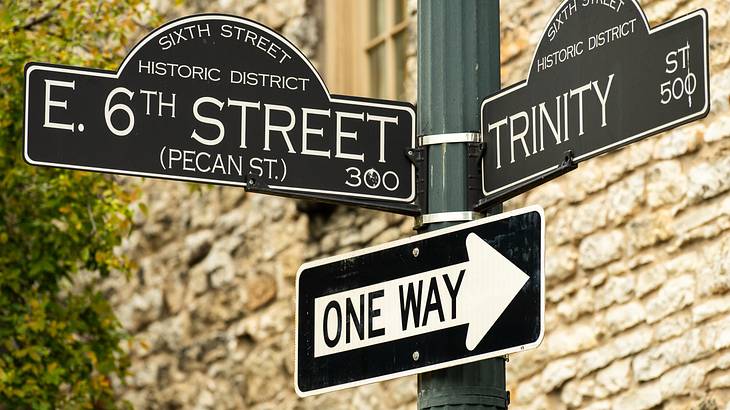
When is the best time to visit Austin, Texas, for music?
Austin is known as "The Live Music Capital of the World." Numerous music venues, from bars to stadiums, host performers daily.
The "high seasons" for music in the city are spring (March-June) and fall (September-December). Since the weather is nice and temperatures are around 70-85 degrees Fahrenheit, performers and audiences can feel comfortable.
There are multiple music festivals taking place during these times of the year. The Austin City Limits Music Festival is one of the most famous and spans two weekends in the first half of October.
Be prepared for higher crowd levels during these months. Tourists and locals tend to flock to concerts; if there's one you'd like to see, make sure to book your tickets early.
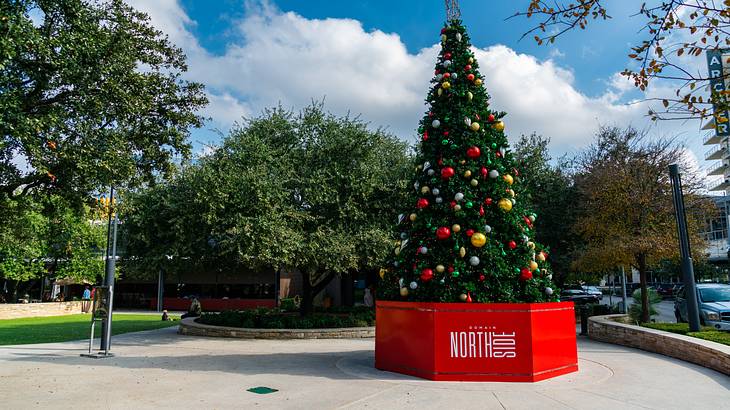
When is the best time to visit Austin, Texas, for the weather?
Fall (September-December) is the best time to travel to Austin, TX, if your biggest concern is having good weather while you're there. While September's temperatures can average around 90 degrees Fahrenheit, the rest of the season is more comfortable.
During the day, you can expect it to be between 63 and 83 degrees Fahrenheit, while at night, temperatures range between 43 and 60 degrees Fahrenheit. Fall is also one of the driest times in the city, with only four or five days of precipitation per month.
The nice weather tends to draw a lot of travelers, so prices will rise, and you'll notice higher crowd levels. If you plan to come during this time, book your travel and accommodation as soon as possible. You can also take a bike tour through the city while simultaneously enjoying the lovely weather.
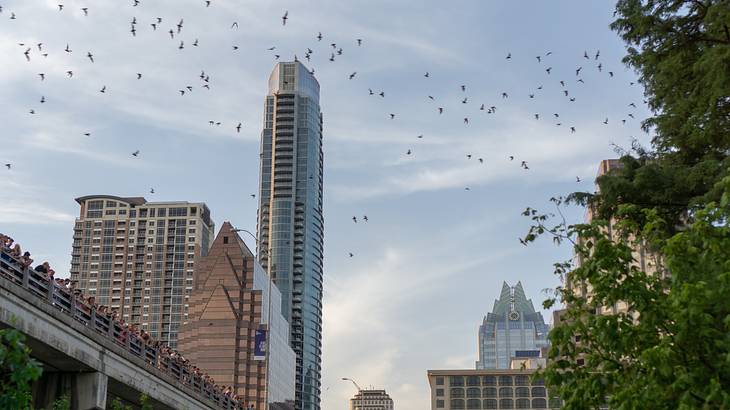
When is the best time to visit Austin, Texas, for the bats?
Summer (June-September) is the best time of year to visit Austin, TX, if you want to see why it's called "Bat City." In July and August, the largest bat colony in North America is particularly active in the area; the Mexican free-tailed bats are prevalent.
Bats are nocturnal, so you're most likely to see them between sunset and around 10 p.m. at night. Though you can see the bats from multiple places around the city, according to locals, the best views are around the Statesman Bat Observation Center and its nearby bridge.
If you can't get to Austin in the summer, you can still catch glimpses in late spring (March-June) and early fall (September-December. However, you'll see fewer bats as these times mark the migration season's beginning and end.

When is the best time to visit Austin and San Antonio together?
Austin and San Antonio are less than a two-hour drive from each other. Many people, therefore, choose to visit both cities during the same trip.
Fall (September-December) and spring (March-June) are the best times to plan a dual visit. Since the weather is mild to warm, usually between 70 and 90 degrees Fahrenheit, your drive between these two locations should be comfortable.
Don't expect to encounter high crowd levels, as many Texans take advantage of the nice weather to travel around the state. On the other hand, fall is considered the peak tourist season for both Austin and San Antonio.
If you want to visit San Antonio on your Austin getaway, consider booking a tour that leaves from Austin. That way, your transport is assured, and you won't miss out on any worthwhile sights.
Weather, Prices, and Crowds in Austin, Texas
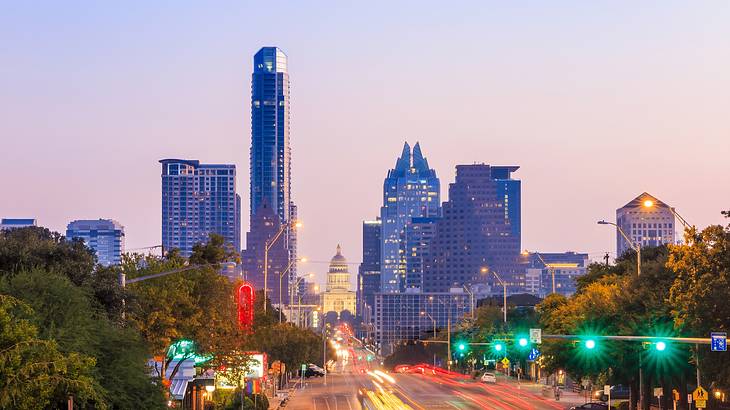
Austin in winter
Winter (December-March) is the best time to find cheap flights to Austin, Texas. Prices start to decrease in November but continue to dip until they reach a low in January.
Austin in February is still an affordable time to travel. Though flights might not be as cheap, you can still find last-minute deals, and hotel rates are usually less expensive.
Austin's winter weather can be a little hit or miss, but generally, temperatures don't go below 40 degrees Fahrenheit and are often in the mid-80s. Five days of average monthly rain are expected.
You'll notice more tourists around Christmas, New Year's Eve, and Valentine's Day. However, during the rest of the season, you won't have to deal with intense crowding since not many people typically travel to the city in winter.
Austin in spring
Spring (March-June) is an ideal time to visit Austin if you want to fill your trip with interesting things to do. The season balances costs, climate, and crowds well for most travelers.
Spring can be a busy time for tourists in Austin, but most tourism comes from in-state travelers. The families on spring break tend to head to the Texas coastline, so the locals will be out in force.
Springtime also marks one of the city's best seasons for live music because the weather is usually pretty agreeable. Temperatures hover around the 70-85 degrees Fahrenheit range. Though spring can be a rainy month, no month gets more than an average of six days of precipitation.
You can often find deals on hotels and flights during this time. Booking at least a month in advance is recommended, though. If you wait until the last minute, you might notice a drastic decrease in your options.
Austin in the summer
Summer (June-September) is Austin's hottest season. There is an average of three days of rain per month, and temperatures regularly reach 95 degrees Fahrenheit.
Many people choose to come to the city when temperatures are a little lower, like during the spring (March-June) or fall (September-December). If you want to avoid high crowd levels, summer can be an ideal time to visit.
Most tourists who come to Austin in summer are families that have to vacation when school isn't in session. However, since a lot of Austin locals go on holiday during this season, crowd levels don't get too intense.
The lower demand for amenities and accommodations results in hotels and airlines lowering prices. You'll often find deals months in advance if you plan a summer trip.
Austin in the fall
Fall (September-December) is Austin's peak tourist season. On average, the weather is a comfortable 70 degrees Fahrenheit, and it rarely rains.
The city hosts events like the Austin Film Festival, usually held between the last week of October and the first week of November. These draw people both from in-state and the rest of the country.
You can also enjoy some of the city's more unique attractions. For example, October is a great time to go on a haunted walking tour.
Crowd levels start to dip in November, which will see prices fall, but hotels will book up rapidly on Thanksgiving weekend. Austin in December is pretty slow until the end of the month when the holiday visitors come to town. If you want to visit during these times, book at least a month in advance for the best deals and options.
In Summary
Austin is a one-of-a-kind city with something for everyone. From music to world-class food, there's plenty to do and see while you're in the "City of the Violet Crown."
Every season in the year has the potential to be an ideal time for you to visit, depending on what you look for in a trip. If you prefer nice weather, you might want to plan to travel in the fall (September-December).
If you're on a budget, winter (December-March) is the cheapest time in the city, and it's also one of the least crowded seasons.
Hopefully, this article has helped you figure out your travel preferences. Now all you have to do is start planning!
Want to keep exploring?
Subscribe for discounts on tickets and hotels and our latest guides.
Thank you for subscribing
We will be in touch soon with discounts on tickets and hotels and our latest guides.
Want to keep exploring?
Subscribe for discounts on tickets and hotels and our latest guides.
Thank you for subscribing
We will be in touch soon with discounts on tickets and hotels and our latest guides.

